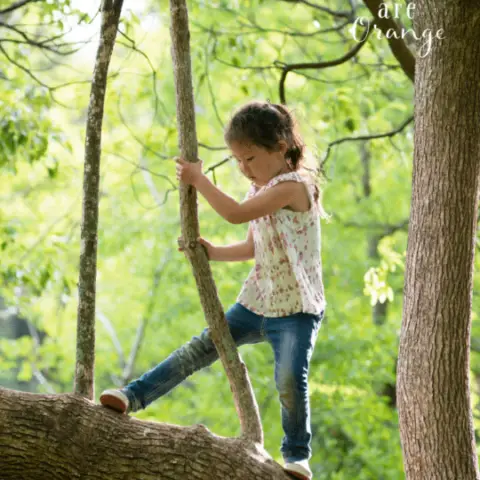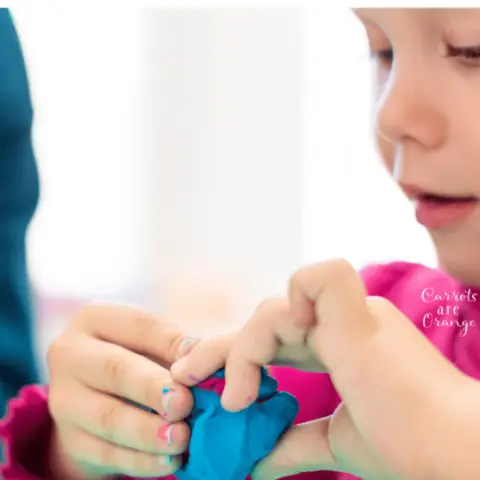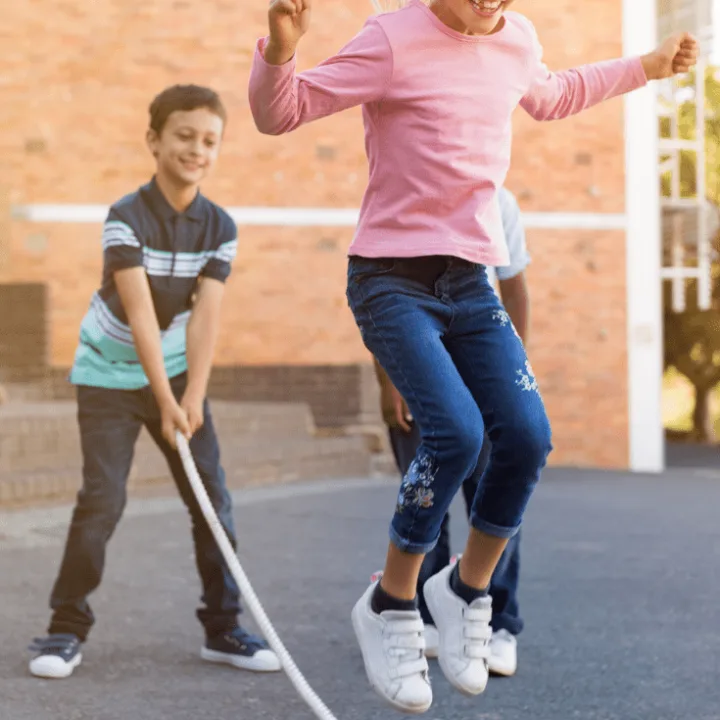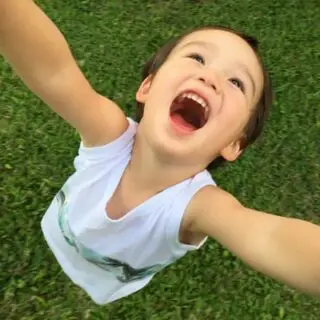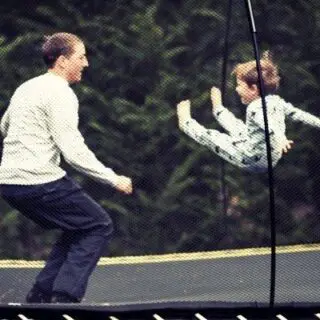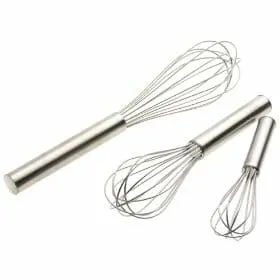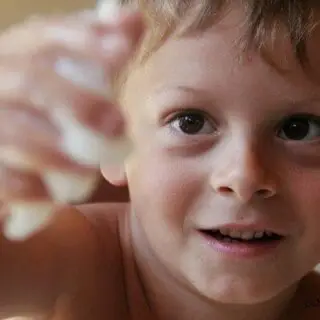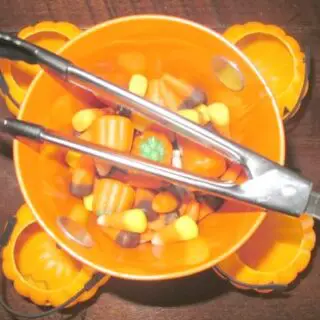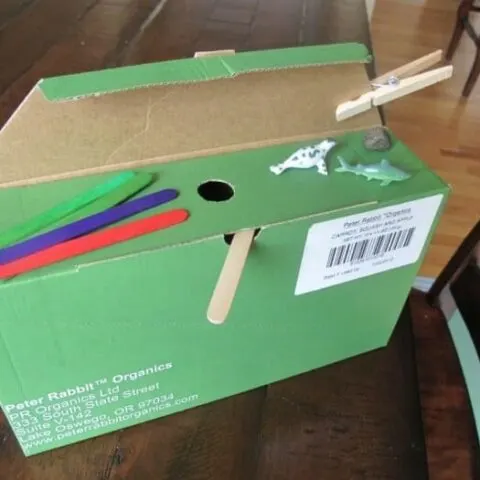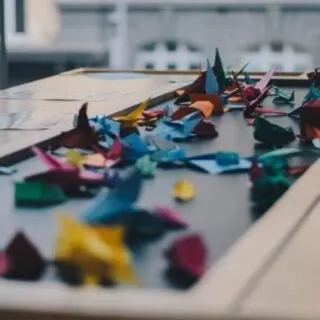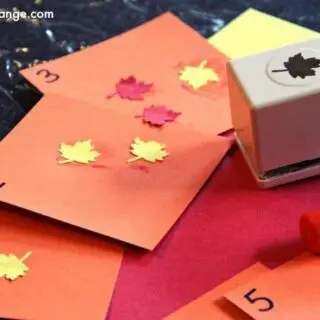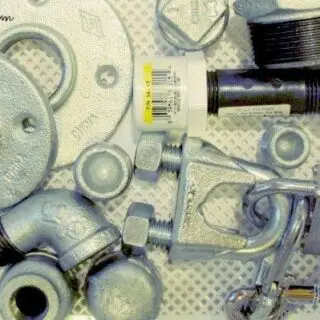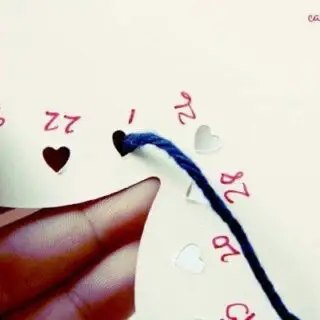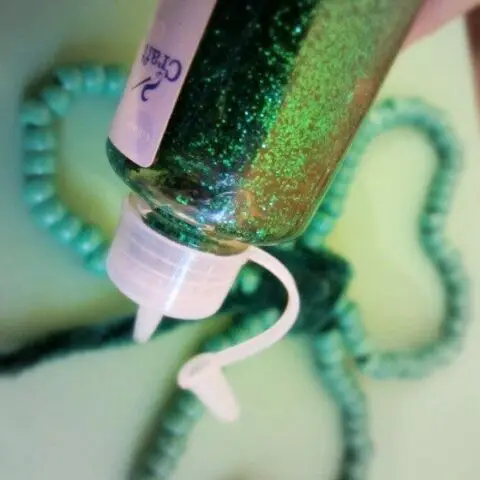This post includes occupational therapy fine motor activities for kids.
Describing occupational therapy for children (or adults for that matter) in a succinct and meaningful way is not an easy task (See Occupational Therapy 101 For Parents), so people have come up with various comparative definitions with our sister profession–physical therapy.
Ever hear this one? “Occupational therapy is for the uppers and physical therapy is for the lowers.” Uppers and lowers, of course, refer to upper extremities (arms and hands) and lower extremities (legs and feet).
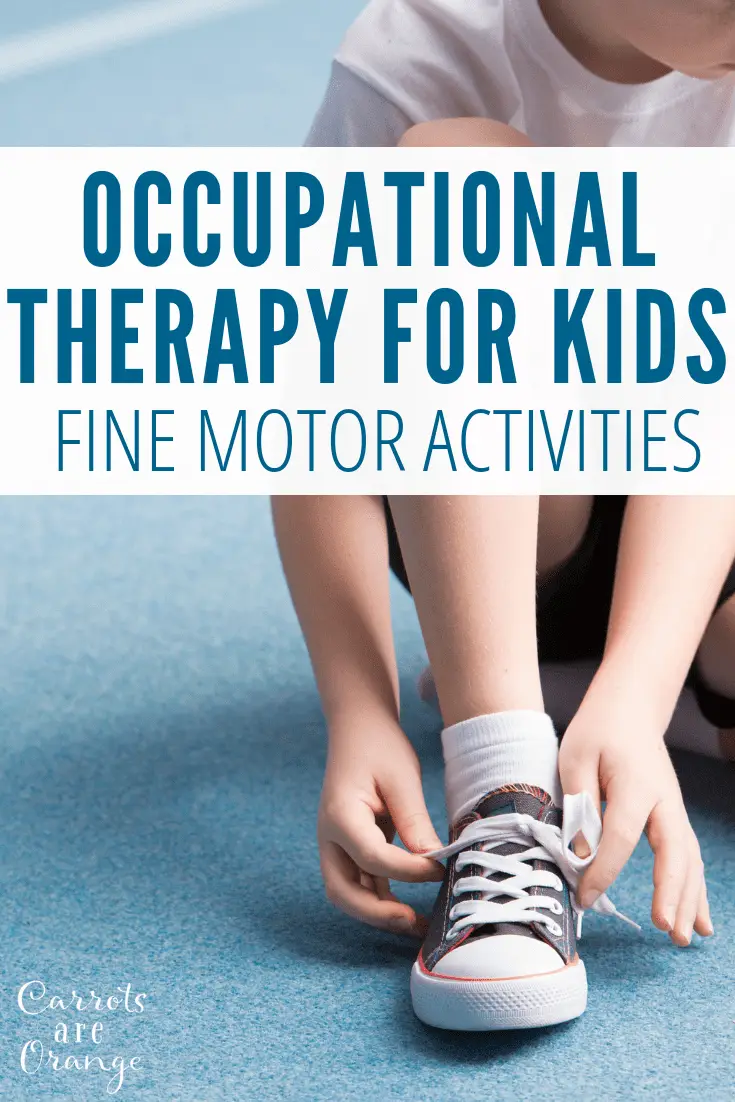
I’m going to be a little nit-picky. It’s not that the above statement is entirely untrue, but I want to make sure that people who use it understand the meaning behind it. See, physical therapy works on physical skills (duh), like walking, standing, sitting, reaching, and so on. Occupational therapy works on “occupations”, or things that occupy a person’s time. There is a ton of overlap but forget about that, for now.
So how do you occupy your time? How do your kids occupy their time? Some of my favorite pastimes are putting on chapstick (yup, totally addicted), opening a can of seltzer water, and weeding my garden. Okay, you got me… those are NOT some of my favorite pastimes, but they are things that I do. And how do I do them, you ask? I use my hands. My husband is a math teacher, so he’d like this format better:
Hands : Occupations = Legs : Movement
(“Hands are to occupations as legs are to movement”)
See where I’m going with this?
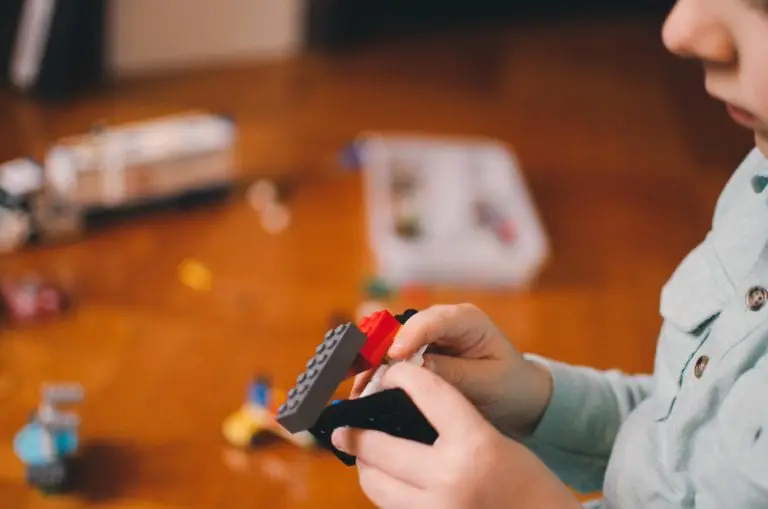
What are Fine Motor Skills?
Gross is both an adjective that means disgusting, a concept that my two sons are obsessed with, or large, like income that hasn’t been messed with or big body movements. Please don’t judge me as a Webster. Physical therapy tends to focus on gross motor skills. Fine, on the other hand, is an adjective that means narrowed or precise.
Fine motor, therefore, means small movements or precise movements. They usually refer to the movements of the fingers, such as pulling apart string cheese, tying shoes, filling in a crossword puzzle, or dialing a phone number.
Occupational therapy marries gross motor and fine motor tasks in an attempt to facilitate meaningful engagement with the environment. That said, what separates us most visibly from PT is the fine motor, so, it’s become our claim to fame. “OT is for the uppers.”
My Kid Has Horrible Fine Motor!
You are not alone! Many kids have horrible fine motor abilities. Not sure if life has made you aware of this yet, but many older adults do, too. And, certainly, folks outside of those two age groups are not immune. So, to help your kid (or your grandmother), we need to back up and think a little bit about physical development.
Related Read: Learn the BEST Proprioception Activities for Kids
Physical development progresses from the core (the center of the body) to distal areas (the hands and feet). It also occurs from large to small movements. If fine motor skills are weak, there is a very good chance that either core stability is weak or gross motor skills are a deficit. To address the fine motor gap, it’s best to first address those two things.
I’m not insinuating that you need to get your kid (or grandmother) to the gym to bulk up or upset them off so much that they transform into angry green men. However, I am telling you that a little bodywork can go a long way.
Power to Proprioception introduced a bunch of ideas that provide deep pressure input to the muscles and joints (i.e. household chores, outside play, and exercise). These can all support gross motor development, too, so they literally kill two birds with one stone!

Other Ways to Strengthen the Core
- Practice perfect posture (shoulders back and down, chin tucked, face forward)
- Belly time (this is not just for babies!) Prop up on elbows to watch t.v., read a book, or
play a video game (sensitive subject alert) - Paddling (we just went out SUP’ing this week, and it was quite a workout for my 8-year
old!) - Walking an energetic dog on a leash… or a goat (seriously, have you ever done that?)

What Next with Helping Fine Motor Skill Development?
Let’s just assume that the core and gross motor skills are good enough to move on. What’s next?
#1: Keep it fun.
#2: Keep it under wraps (don’t even consider telling them that the Legos will help them to get better handwriting).
#3: Integrate naturally.
Here are a few additional occupational therapy fine motor activities for you to consider:
- Legos (my sons’ favorite!)
- Sticker charts or sticker pictures
- Peeling crayons/coloring with little crayon pieces
- Drawing pictures of characters that they love
- Playdough
- Rubix cube
- Secret lockbox with key for personal treasures
- Dress up clothes with fasteners, like buttons and zippers
- Buy lace-up shoes!
- Use various containers for toys (zip-lock baggies, Tupperware, etc)
- Magnet poems/letters
I’m going to summarize, here. Big to little, gross to fine, core to distal. Fun, secret, natural.
Got it?
Want more? Check out this post for all sorts of additional ideas!

